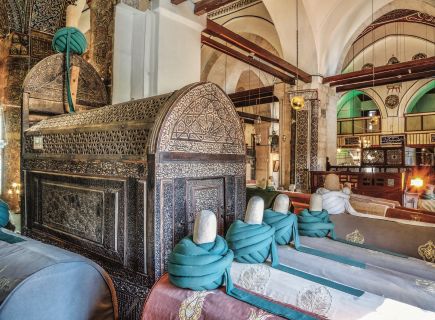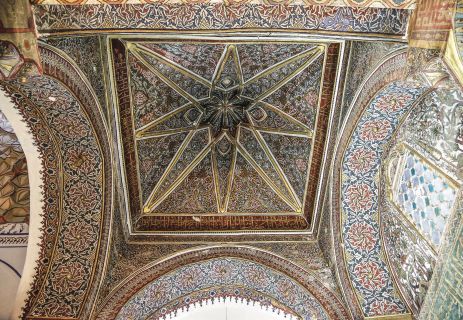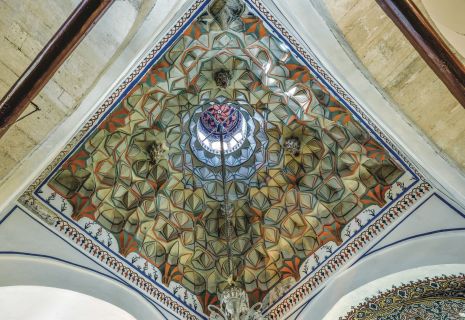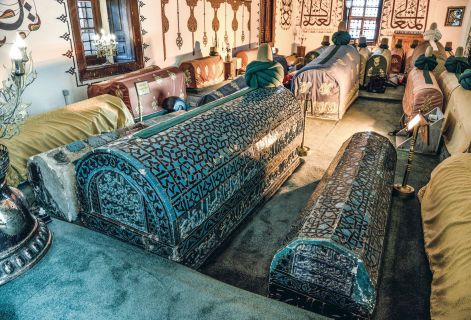TOMB OF RUMI
Turkiye KONYA 13th Century
MEVLANAOlarak da bilinir.
It is located downtown in the complex functioning as the Konya Museum today.
The tomb named as the Qubba-t-al-Hadra, literally “the green dome”, houses the graves of Mawlana Jalal al-Din Rum, widely known as Rumi across the world, and his son Sultan Walad. The graves are surrounded with four piers connected with pointed arches. The two south piers were connected with a wall. The interior is surmounted with a star-vault and the only window is on the upper part of the qibla wall. The crypt level of the monument is closed.
On the exterior, the sixteen-lobed structure body is crowned with a sixteen-lobed cone roof; the transition to the cone roof is via a two-tiered drum. Building materials are stone and brick.
Having undergone repairs various times through history, the monument has lost most of its authenticity. Originally it was built as an independent monumental tomb similar to the examples of its time but when it was surrounded with a cluster of other buildings the need arose to raise it with a lobed body and cone.
The monument was heavily restored in the Qaramanid and Ottoman periods and the stencilled painted decoration inside are from the reign of the Ottoman Sultan Bayezid II. Stylised floral motifs and calligraphy are painted in various colours but especially extensive use of gold wash is eye-catching.
The polygonal drum and cone are faced with turquoise coloured tiles on the exterior. The calligraphic tile band in the upper part of the lobed body reads the Verse of the Throne. The tiles were replaced with new ones in the restoration of 1965.
In the structure is a large marble cenotaph commissioned by Ottoman Sultan Süleyman the Magnificent.
The original cenotaph of Rumi was of wood and now marks the burial place of his father nearby. Carved with astounding workmanship the cenotaph is of walnut wood.




